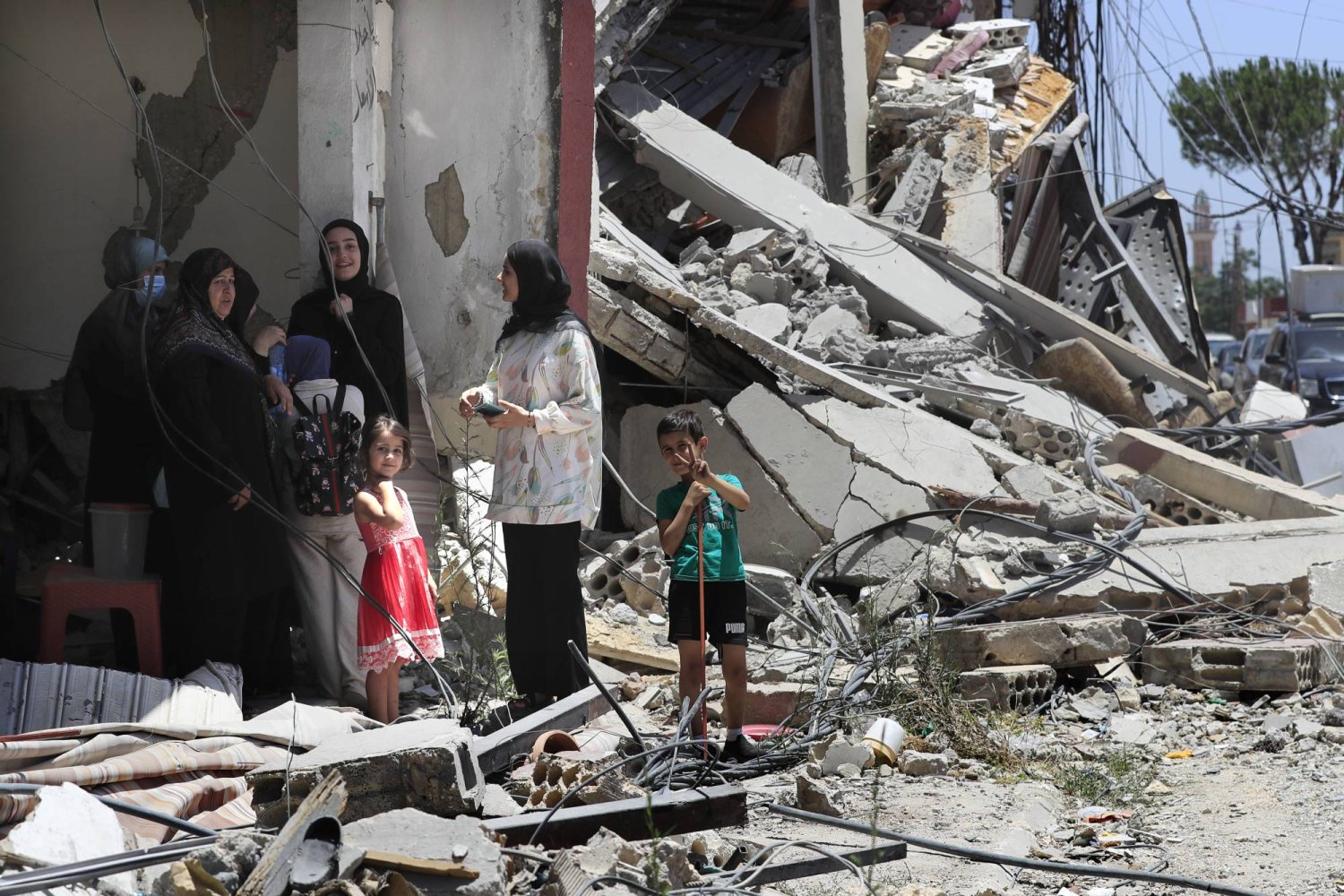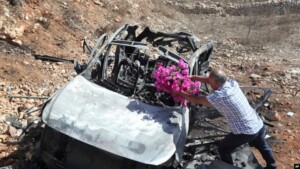We Communicate For Happy Children
 Israel's War on Lebanon. Children: Forgotten Victims
Israel's War on Lebanon. Children: Forgotten Victims 
Prepared by: The Media and Communication Department at the Arab Network of Early Childhood Network
5 September 2024
For the past 11 months, children and their families in southern Lebanon, especially in the border areas where the actual fighting is taking place, as well as some areas of the Bekaa Valley and the southern suburbs of Beirut, have been living in a very difficult situation as a result of the war that has been raging since 8 October.
As is the case in the Gaza Strip, which is witnessing genocide, the Israeli army in Lebanon does not distinguish between combatants and civilians. As of 23 August 2024, 133 civilians, including 23 children, 33 women, 3 journalists, and 21 health and relief workers, have been martyred. The aggression also led to the displacement of more than 120,000 people, according to the Lebanese Ministry of Health, most of them from the southern regions, and more than 102,000 as of 8 August, according to figures from the International Organisation for Migration (IOM), an increase of about 73,000 since last October. According to the United Nations, children make up at least 35 per cent of those displaced. As of 16 August, the United Nations Office for the Coordination of Humanitarian Affairs (OCHA) estimated that 150,000 people were still living within 10 kilometers of the Blue Line between Lebanon and occupied Palestine.
While tensions over the outbreak of a full-scale war, which have dominated the scene over the past month, have decreased, warnings remain that the number of displaced people could rise as Lebanese are displaced from areas that have not seen significant strikes in recent months. Among the warnings is the International Organization for Migration (IOM), which noted that Israel is responsible for 83 per cent of the strikes on Lebanese territory out of the total number of strikes between the two sides. The Tyre district is one of the areas that has received the most displaced people in the south. According to the Disaster Management Unit of the Union of Tyre Municipalities, the number of IDPs has exceeded 26,000. Several of them are taking shelter in accommodation centers, including schools and vocational centers, while others live in rented apartments or with host families.
According to the Lebanese Ministry of Health, the latter has developed “a plan to deal with the displacement and is working in cooperation with its partners to provide health services to IDPs. Medical care is provided through mobile clinics, especially for those who have taken refuge in shelter centers”. In light of the constant fear of the spread of diseases and epidemics among IDPs in overcrowded shelters, the ministry noted that ”an epidemiological surveillance plan has been put in place”.
In terms of civilian entities, precise figures for damage in the south and areas that have been subjected to bombings are absent because the Lebanese state has yet to conduct a comprehensive survey. However, as of 23 August, the “South Council” estimated that around 3,000 homes had been completely or partially destroyed by Israeli shelling. The Israeli army deliberately damages and burns agricultural land and spoils the harvest season, which has led to the damage of around 1,700 hectares, according to the Lebanese Ministry of Environment. To do so, the Israeli army uses internationally banned incendiary phosphorus bombs and targets firefighters to prevent them from extinguishing the fires. Human Rights Watch has verified Israel’s widespread use of white phosphorus in southern Lebanon, including unlawful air-delivered munitions over populated residential areas. It warned that this “places civilians in grave danger and contributes to their displacement.” As of 13 August, 248 people have suffered white phosphorus injuries, including 23 people under the age of 19, according to the Lebanese Ministry of Health, and the numbers are rising.
As a result of displacement and land destruction, most families living in the border areas who depend on the agricultural season have lost their income and land, leaving them unable to afford rent or food.

Samir Ayoub, uncle of three children who were martyred by an Israeli airstrike, puts flowers on their car in the town of Ainata, a Lebanese border village with occupied Palestine in south Lebanon, Nov. 6, 2023 (AP)
At the educational level, the children of the south, including those in border areas and displaced people, are facing severe challenges as the Minister of Education and Higher Education has set 17 September as the date for the start of classes in public schools and high schools. Last year, many students painstakingly pursued their studies, some remotely (under bombardment and without electricity and internet access), and some received their lessons in schools hosting displaced people. On the other hand, about 20,000 children were deprived of their studies due to the closure of their schools. Thousands of young children have been deprived of pre-school education due to the closure of nurseries. This year, the challenges have doubled. The number of displaced people has increased, as have private school fees, and the aggression continues. While the education sector already suffers from many problems and a lack of clear contingency plans, several scenarios are currently being discussed on how to start the current school year in light of the war, including remote education or moving students to schools that are not in danger, according to Ministry of Education officials.
The poor educational situation comes against the backdrop of Lebanon’s collapsing economic and social situation that has been unfolding for years. This situation has affected all sectors, especially food security. In this context, the percentage of people suffering from food insecurity in Lebanon increased by 4% in just five months, from 19% in March 2024 to 23% in August of the same year, according to OCHA.
With every war, violence, destruction, and displacement comes psychological trauma, fear and anxiety for children. Children in the south, those who remain in their own land or are displaced, as well as those who live in areas that have been bombed or are at risk of being bombed, are experiencing these traumas. Many children are also subjected to bullying and isolation in some host communities, adding to their psychological stress. Child protection organizations have reported that children displaced from the south talk about their nightmares, and parents have reported that they have become more aggressive as a result of daily stresses.
With tragic conditions, a collapsing economy, and an under-resourced caretaker government, Lebanon, and the South in particular, rely on philanthropic organizations to support the displaced. However, while the war continues, international funding is declining. The Guardian newspaper quotes the director of a shelter in Tyre as saying that since last October, the number of major donors to the city’s relief efforts has dropped from 51 to 5 due to the protracted war and the lack of resources to support such a lengthy operation. OCHA also emphasizes that “humanitarian partners need $110 million to continuously respond to the needs of people affected by the war” until the end of this year.
